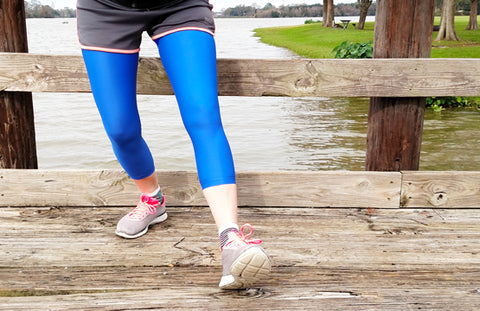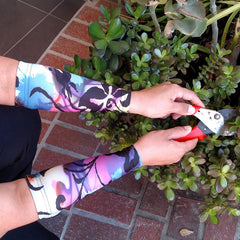 Compression sleeves have become an everyday part of life for many lymphedema patients.
Compression sleeves have become an everyday part of life for many lymphedema patients.
They provide tremendous support for the swelling you’re facing and they’re a relatively inexpensive solution for the condition.
However, as with all products you think about buying, you need to take a moment and ask whether or not a product actually works, or if it’s just tricky marketing designed to make you buy something you don’t need.
Thankfully, the research says that compression sleeves are actually an excellent way to manage your swelling. But rather than just tell you that, we wanted to give you a quick glimpse at what the experts in the medical world are saying about them.
Compression Treatments Help Your Body Process Lymphatic Fluids
As you probably already know, damaged lymph nodes have a hard time moving lymphatic fluid through the body. The result is localized swelling in the limbs, a condition that cancer patients are very familiar with.
Compression treatments provide your swelling with even, light pressure that helps your lymphatic fluid flow properly. Think of your compression sleeve as a masseuse that’s constantly massaging your lymph vessels.
According to Cancer Research UK, compression sleeves also provide just enough pressure on your muscles to cause them to contract enough, on a regular basis, to help drain additional lymphatic fluid. In general, they say, “compression garments can help lymphedema from getting worse.”
Compression Treatments Do Not Cure Your Swelling
Any website or salesman who claims their compression sleeves will cure your swelling is just feeding you a sales pitch; it’s not actually true.
That’s why, when you go on our site, you won’t find any outrageous claims about what our sleeves can do. We stick with solid, made-in-the-USA designs based on what we know about science and the demands of everyday use.
Compression Treatments and Exercise Can Help
 For patients who’ve experienced lymphedema after cancer treatments, exercise – even if it’s just walking – can be a source of increased swelling and, in the end, frustration.
For patients who’ve experienced lymphedema after cancer treatments, exercise – even if it’s just walking – can be a source of increased swelling and, in the end, frustration.
But just because exercise can increase swelling, the Lymphatic and Education Research Network (LERN) says that doesn’t mean that you’re confined to your bed and lounge chair.
You can exercise, but you just have to take extra precautions.
“While, in the long run, exercise is very beneficial,” LERN says, “it is very important to give your body adequate time for healing and to not push the exercise early on.”
This can be tough, especially if you were used to going through the same workout routine every day before your cancer treatments.
However, the advice to ease yourself back into exercise is wise. Physical activity can increase the formation of lymph in your arms and legs.
“You don’t want to push the lymphatic system ‘over the edge,’” LERN says. “Once you recognize your threshold for activity, you can gently extend your limits over time.”
Getting Used to Wearing a Compression Garment: A Few Tips
We think the evidence is pretty clear that compression garments like the ones we offer are a legitimate way to help your body process lymph.
Deciding to buy a sleeve though, should take some planning and an understanding of how to ease your body into using the garments.
Our first tip is to use your new compression sleeve a few hours a day to get your body used to its presence. Once you feel yourself getting more comfortable, you can increase the number of hours you wear it.
 Second, remember to clean your skin in the areas where you wear your compression sleeves. As Mayo Clinic points out, cleanliness is an important part of taking care of yourself.
Second, remember to clean your skin in the areas where you wear your compression sleeves. As Mayo Clinic points out, cleanliness is an important part of taking care of yourself.
“Do your best to prevent complications in your arm or leg. Clean your skin daily, looking over every inch of your affected limb for signs of trouble, such as cracks and cuts,” they wrote in their guide to lymphedema.
The final bit of advice we have is to join a lymphedema community. Solid support groups are a fantastic way to not only find empathy from fellow patients, but also to stay in touch with the latest information on lymphedema research, advances and treatments.
Mayo Clinic suggest heading to the National Lymphedema Network’s (NLN) website to find a support group in your area. We think that’s a great idea. Click here to head to the NLN website and learn more about who they are.
About the Author: J.R. Duren is a regular contributor to the Skin Guards Skin Care Blog.
This Skin Care Blog is proudly sponsored by SKIN GUARDS.
